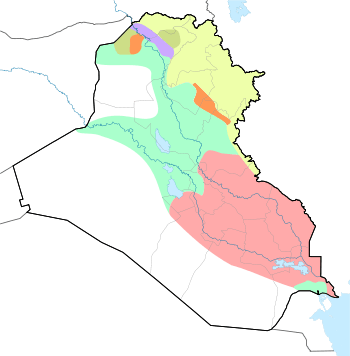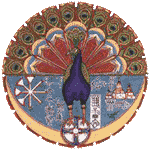Ezidkhan


Ezidkhan (Ezdiki: Êzîdxan, Arabic: ايزيدخان, English: Land of the Yazidis)[1] encapsulates the historical areas of settlement of the Yazidis. It includes the Sinjar District (Sinjar town, Khana Sor, Sinune, Zorava, Gohbal, Borek, Dohula, Dugure, Siba Sheikh Khidir, Til Ezer, Kocho etc.) and Shekhan District (Shekhan town, Ba'adra, Lalish, Hahad etc.) and also parts of the Al-Hamdaniya District (Bashiqa and Bahzani) and Tel Keppe District (Hatarah, Bozan etc.) in the Nineveh Governorate in northern Iraq. All this areas are primarily inhabited by Yezidis with a minority of Assyrians and Shabaks.[2] Whereas Ezidkhan encapsulates an area now divided between Iran, Iraq, Turkey, and Syria,[3] Ezidkhan, conceptually a part of Greater Ezidkhan, lies solely within the boundaries of Iraq, including regions both within the Kurdish Regional Government (eg. Shekhan) and Iraq proper (eg. Sinjar).
Historical references

The term Ezidkhan is also often found in the sacred texts of the Yezidi. An example of this is the Qesîda Şerfedîn (The message of Sherfedin):[4][5]
- Ciwabê bidne Êzîdxanê (Proclaims the message in the Land of the Yezidis)
- Bila qayîmkin Îmanê (They should consolidate and defend their faith)
- Şerfedîn mîr e li dîwanê (Sherfedin is the prince in residence)

Notable locations
The village of Lalish, containing the holiest temple complex in Yezidism, is located within the Yezidi settlements in what is now northern Iraq. Lalish is currently under the jurisdiction of the Kurdistan Regional Government (KRG).
Modern usage
Due to the formation of dedicated Yezidi Peshmerga in response to the advance of the Islamic State, the term 'Ezidkhan' has experienced greater usage. In October 2015 the Yekîneyên Parastina Jin ê Şengalê or YPJ-Sinjar (Women's Defense Units of Sinjar) changed its name to Yekinêyen Jinên Êzidxan or YJÊ (Ezidkhan Women's Units).[6] And in November 2015 the Hêza Parastina Şingal or HPŞ (Protection Force of Sinjar) changed its name to Hêza Parastina Êzîdxanê or HPÊ (Protection Force of Ezidkhan).[7]
See also
- Nineveh Province
- Genocide of Yazidis by ISIL
- Sinjar massacre
- Sinjar Alliance
- Kurdification & Arabization
- Yazidi language
References
- ↑ "Interview mit Qasim Shesho: Êzîden müssen mit schweren Waffen ausgerüstet werden – ÊzîdîPress". Retrieved 16 January 2016.
- ↑ "Êzîdxan: Ein Projekt von Eziden und PKK - und die Rolle Deutschlands - DTJ ONLINE". DTJ ONLINE. Retrieved 16 January 2016.
- ↑ "Learn About Kurdish History | The Kurdish Project". Retrieved 2016-08-17.
- ↑ "ÊzîdîLeaks: Sheikh Sherfedin und seine militärischen Aktivitäten". Retrieved 16 January 2016.
- ↑ "Qesîda Şerfedîn – Die Botschaft Şerfedîns". Retrieved 16 January 2016.
- ↑ "ANF - Ajansa Nûçeyan a Firatê". Retrieved 16 January 2016.
- ↑ "HPŞ benennt sich in HPÊ um: Hêza Parastina Êzîdxan – ÊzîdîPress". Retrieved 16 January 2016.